Abstract
An assay system is described for measurement of specific binding of [125I]insulin to intact fat cells and membrane fractions from such cells. The binding is time- and temperature-dependent and saturable with respect to insulin; the bound insulin is displaced by native insulin but not by oxidized or reduced insulin or by a number of other peptide hormones. A maximum of about 11,000 molecules of insulin can bind per cell. The insulin-receptor association is a bimolecular reaction with a rate constant of 1.5 × 107 M-1 sec-1, while the dissociation is a strictly first-order process with a rate constant of 7.4 × 10-4 sec-1. A dissociation constant of 5.0 × 10-11 M can be calculated from these rate constants, whereas a value of 6.1 × 10-11 M is obtained on the basis of enhancement of glucose oxidation. Complex formation does not result in chemical change or inactivation of insulin or receptor. The total binding capacity of fat cells is quantitatively recovered in the particulate fraction after homogenization. The insulin-cell receptor interaction is a simple dissociable process involving a homogeneous species probably present exclusively in the cell membrane.
Keywords: association constant, cell membrane, glucagon, HTC cells, erythrocytes
Full text
PDF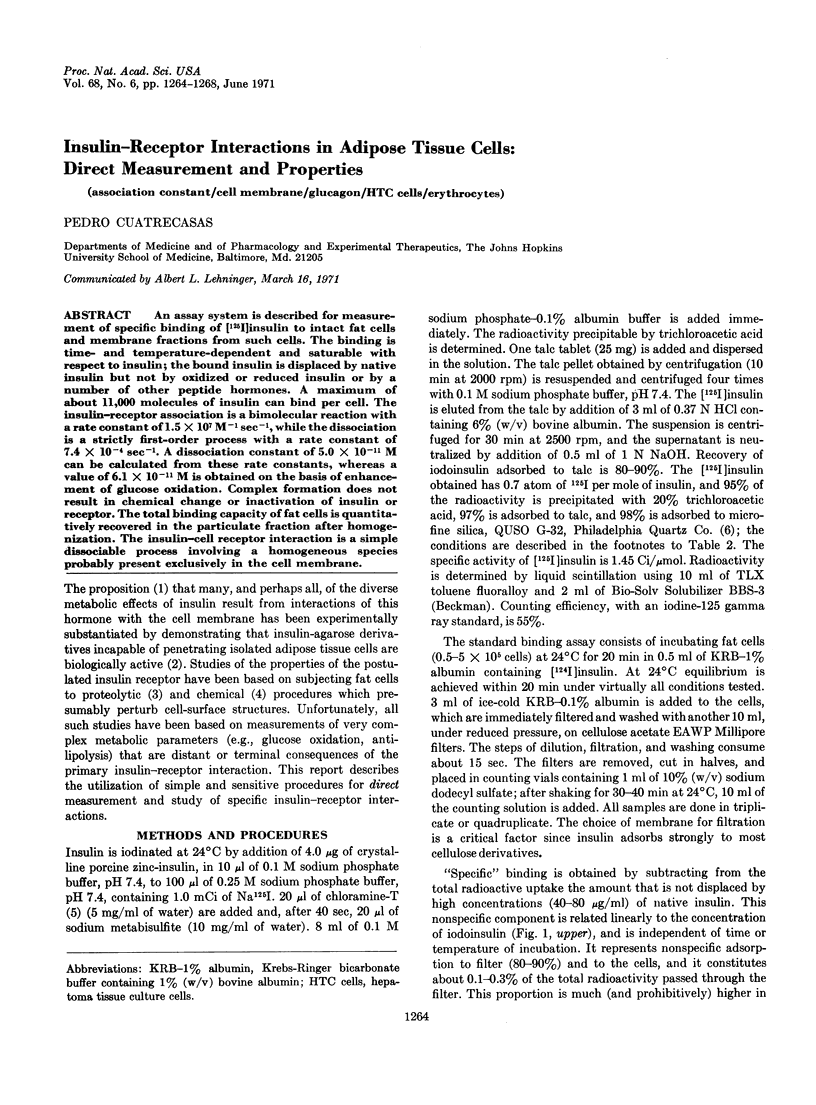
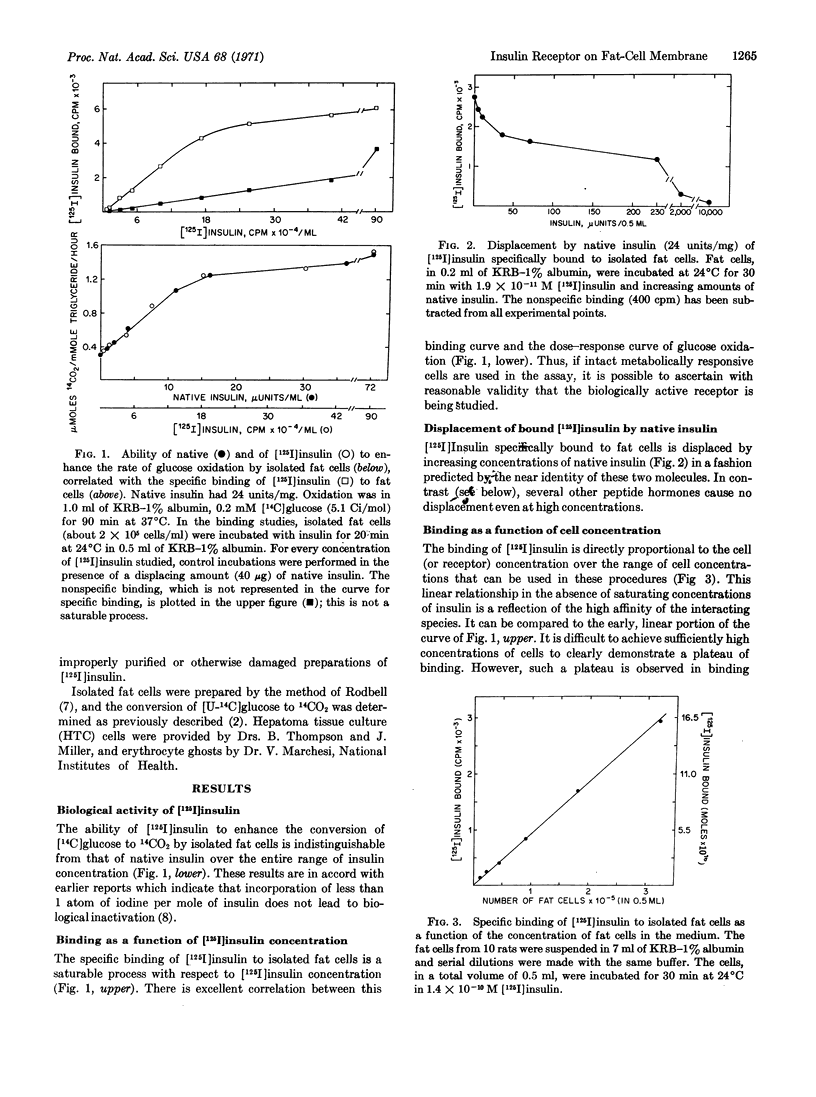
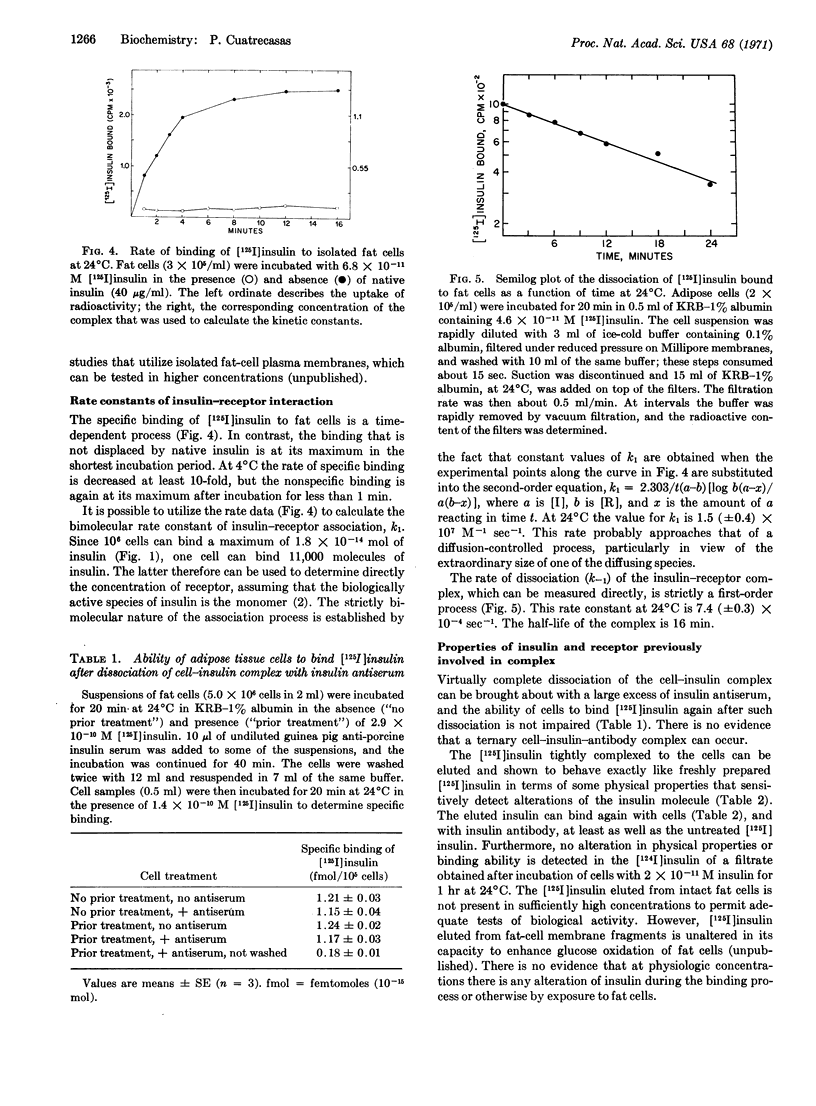
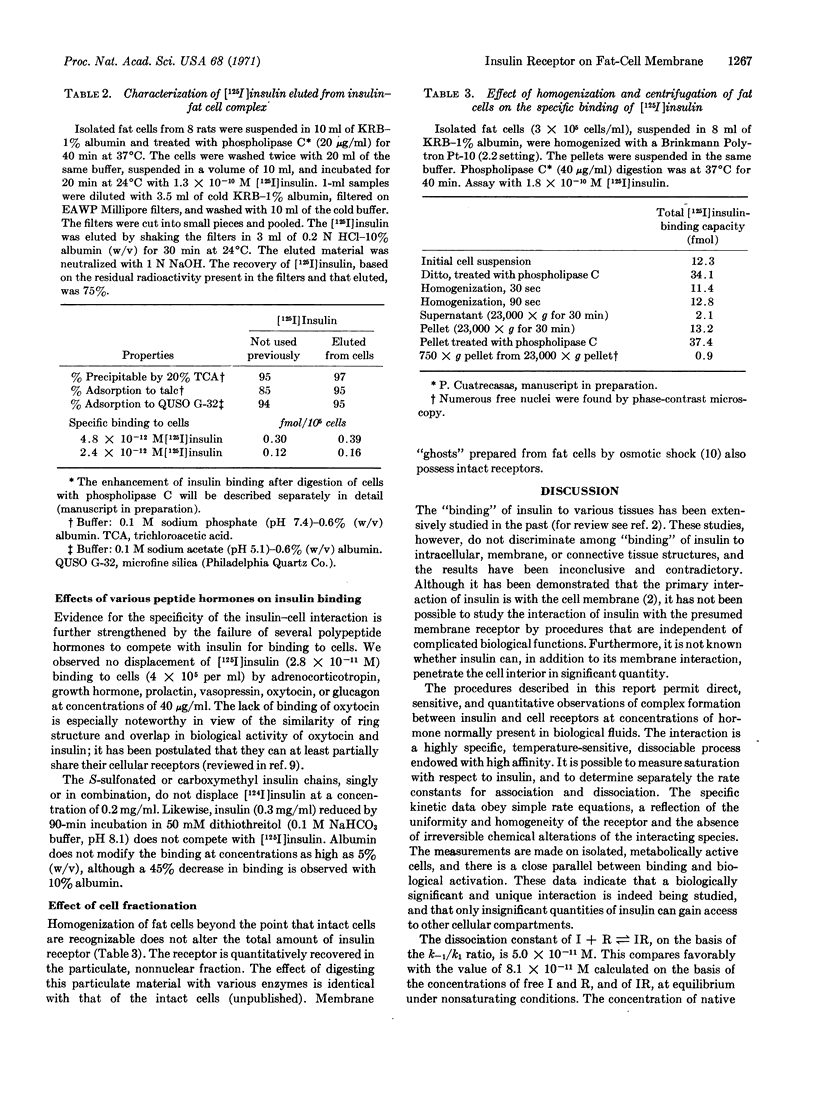
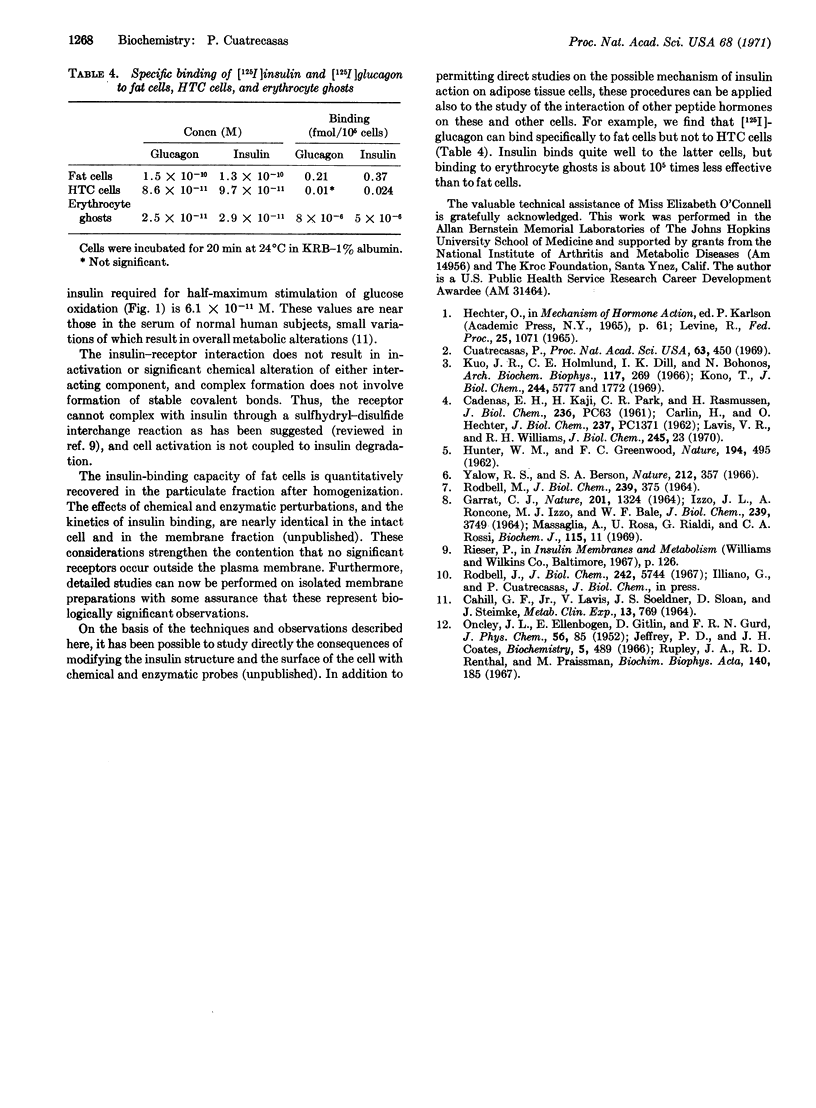
Selected References
These references are in PubMed. This may not be the complete list of references from this article.
- CAHILL G. F., Jr, LAURIS V., SOELDNER J. S., SLONE D., STEINKE J. ASSAY OF SERUM INSULIN AND INSULIN-LIKE ACTIVITY ON ADIPOSE TISSUE AND MUSCLE IN VIVO. Metabolism. 1964 Aug;13:769–774. doi: 10.1016/0026-0495(64)90022-8. [DOI] [PubMed] [Google Scholar]
- Cuatrecasas P. Interaction of insulin with the cell membrane: the primary action of insulin. Proc Natl Acad Sci U S A. 1969 Jun;63(2):450–457. doi: 10.1073/pnas.63.2.450. [DOI] [PMC free article] [PubMed] [Google Scholar]
- GARRATT C. J. EFFECT OF IODINATION ON THE BIOLOGICAL ACTIVITY OF INSULIN. Nature. 1964 Mar 28;201:1324–1325. doi: 10.1038/2011324a0. [DOI] [PubMed] [Google Scholar]
- HUNTER W. M., GREENWOOD F. C. Preparation of iodine-131 labelled human growth hormone of high specific activity. Nature. 1962 May 5;194:495–496. doi: 10.1038/194495a0. [DOI] [PubMed] [Google Scholar]
- IZZO J. L., RONCONE A., IZZO M. J., BALE W. F. RELATIONSHIP BETWEEN DEGREE OF IODINATION OF INSULIN AND ITS BIOLOGICAL, ELECTROPHORETIC, AND IMMUNOCHEMICAL PROPERTIES. J Biol Chem. 1964 Nov;239:3749–3754. [PubMed] [Google Scholar]
- Jeffrey P. D., Coates J. H. An equilibrium ultracentrifuge study of the self-association of bovine insulin. Biochemistry. 1966 Feb;5(2):489–498. doi: 10.1021/bi00866a014. [DOI] [PubMed] [Google Scholar]
- Kuo J. F., Holmlund C. E., Dill I. K., Bohonos N. Insulin-like activity of a microbial protease on isolated fat cells. Arch Biochem Biophys. 1966 Nov;117(2):269–274. doi: 10.1016/0003-9861(66)90412-7. [DOI] [PubMed] [Google Scholar]
- RODBELL M. METABOLISM OF ISOLATED FAT CELLS. I. EFFECTS OF HORMONES ON GLUCOSE METABOLISM AND LIPOLYSIS. J Biol Chem. 1964 Feb;239:375–380. [PubMed] [Google Scholar]
- Rodbell M. Metabolism of isolated fat cells. V. Preparation of "ghosts" and their properties; adenyl cyclase and other enzymes. J Biol Chem. 1967 Dec 25;242(24):5744–5750. [PubMed] [Google Scholar]
- Rosselin G., Assan R., Yalow R. S., Berson S. A. Separation of antibody-bound and unbound peptide hormones labelled with iodine-131 by talcum powder and precipitated silica. Nature. 1966 Oct 22;212(5060):355–357. doi: 10.1038/212355a0. [DOI] [PubMed] [Google Scholar]


